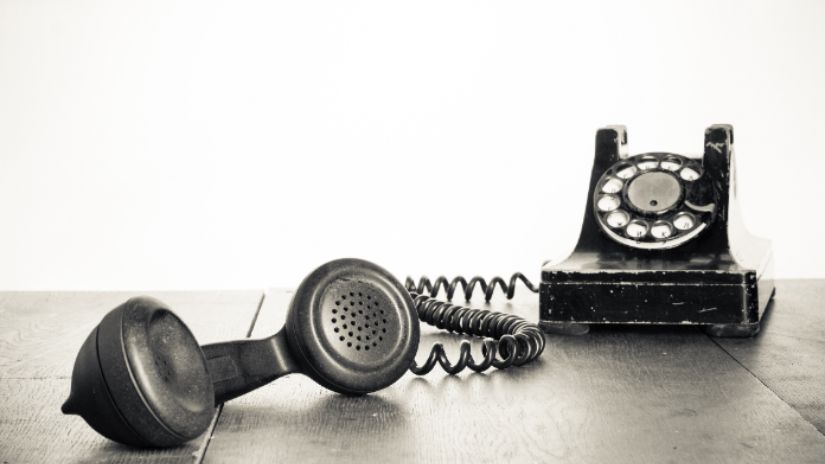- If you're travelling to Australia or buying a phone from another country, it's essential to check if the phone is compatible with Australian phone networks.
- Mobile network operators in Australia
- 3G discontinuation

When using a mobile phone for calls, messaging, and Internet, it needs to connect to a specific network, which varies around the world.
To ensure your phone works in Australia, check if it's compatible with local networks, which use different frequencies like 850MHz or 2100MHz.
Be mindful of regional variations in phone models when checking specifications, and take a look at what you need to know to ensure your mobile phone will work while you’re here.
Determine network specifications
In Australia, a mobile phone bought overseas may not be able to connect to a local network despite the use of a SIM card. For the connection to be established here, your device’s phone radio must match the specific bands for local networks.
Your phone's manufacturer website is a reliable source for this information. Look for terms like ‘UTMS’ or ‘HSPDA’ for 3G, ‘FDD LTE’ for 4G, and ‘5G NR’ for 5G in the specifications.
For 3G, frequencies are typically used, while 4G networks may also be indicated by band numbers. Make sure to check the specifications specific to your country, as they can vary.
If you're unsure, check your phone's settings or the manufacturer's website for details. It's important to match your phone's radio bands with the local network frequencies to ensure compatibility
Local network frequencies in Australia
In Australia, the main 3G frequencies are 850MHz and 900MHz. For 4G, the main bands are B1, B3, B5, B7, and B28. The primary 5G band is n78, but there is also coverage on n1, n5, n28, and n40.
Telstra, Optus, and Vodafone are starting to use n258 for mmWave 5G, but coverage is limited. It’s worth noting that 3G is being shut down by the end of 2024 in Australia to make way for better 4G and 5G coverage. If you plan to use a phone in Australia, it must support these frequencies and bands.
| 3G | 4G | 5G | |
| Telstra | 850MHz (B5) |
700MHz (B28) 900MHz (B8) 1800MHz (B3) 2100MHz (B1) 2600MHz (B7) |
850MHz (n5) 3500MHz (n78) 26GHz (n258) |
| Optus | 900MHz (B8) |
700MHz (B28) 1800MHz (B3) 2100MHz (B1) 2300MHz (B40) 2600MHz (B7) |
2100MHz (n1) 2300MHz (n40) 3500MHz (n78) 26GHz (n258) |
| Vodafone | 900MHz (B8) |
850MHz (B5) 1800MHz (B3) 2100MHz (B1) 2600MHz (B7) |
700MHz (n28) 850MHz (n5) 1800MHz (n3) 3500MHz (n78) 26GHz (n258) |
Disclaimer: Phone networks use multiple frequencies and not all of them are available in every location across Australia. There are some areas that use a completely different set of frequencies compared to the ones used in the cities.
Mobile network operators in Australia
In Australia, Telstra, Optus, and Vodafone own and run the three main mobile networks, which power the smaller service providers known as mobile virtual network operators (MVNOs). MVNOs typically offer basic services at lower rates.
Australian networks use the GSM standard, which is common globally, unlike in the US and Japan where CDMA is still used. If you have a CDMA-only phone, you won't be able to access 3G networks in Australia for calls and texts. You might access 4G networks for data, but 4G networks are data-only unless your phone supports VoLTE.
Each major network operates on its own set of frequencies, with some overlap but not always.
What about 5G?
Australia rolled out 5G networks in mid-2019, but coverage remains limited as the rollout continues. Telstra leads with over 60% coverage, while Optus covers 1.4 million households. Vodafone's 5G is in over 1,000 suburbs across major cities.
Most of Australia's 5G uses the 3500MHz band (n78), but Telstra, Optus, and Vodafone are repurposing some 3G and 4G bands for 5G.
Telcos are also working on mmWave 5G, which offers faster speeds but limited range. Coverage is rare, and few devices support it yet.
3G discontinuation
Australian telecommunications companies have started decommissioning segments of its 3G networks. Telstra, Optus, and Vodafone have ceased 3G operations on its 2100MHz spectrum.
Telstra plans to keep its remaining 3G network operational until June 2024. Optus is scheduled to shut down its 3G services in September 2024. Vodafone, on the other hand, already concluded its 3G services in December 2023.
Frequently Asked Questions
Is it possible to switch from one carrier to another?
Switching between mobile providers in Australia is generally straightforward. Since all carriers use similar technologies, compatibility is rarely a concern, especially for phones purchased within Australia.
If you're on a long-term contract, you'll need to complete it or pay an early termination fee before switching providers. However, if you're on a month-to-month or prepaid plan, you can switch at any time without penalty.
Can I use the same mobile number?
If you have an active Australian mobile number, switching providers and keeping your number is simple. When signing up for a new plan, provide your current number or inform the salesperson that you want to retain it. Your new provider will then arrange the transfer with your existing provider.
The transfer typically takes between 15 minutes to 48 hours. During this period, you can continue using your phone with your old provider. Once the transfer is complete, replace the old SIM card with the new one and continue using your phone as usual.
If you're bringing a phone from overseas, you will be assigned a new phone number when you sign up with an Australian telco.


